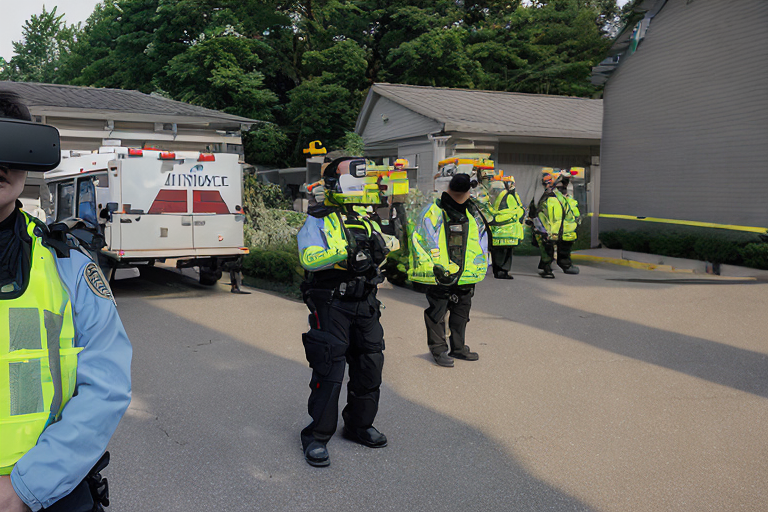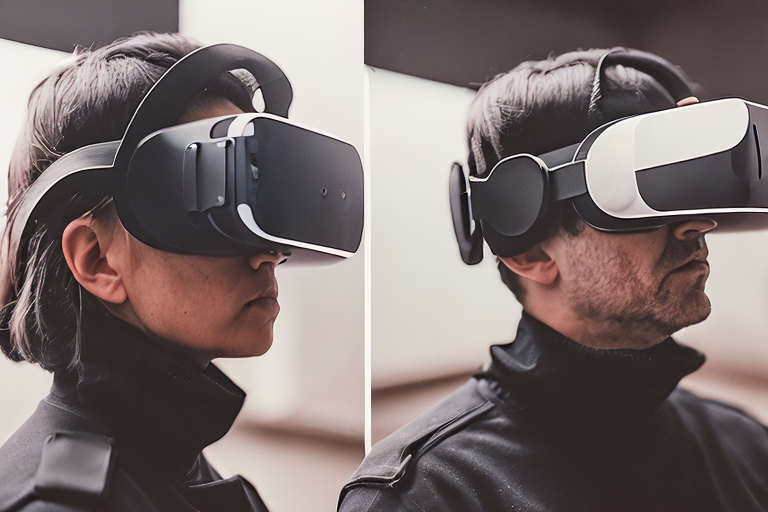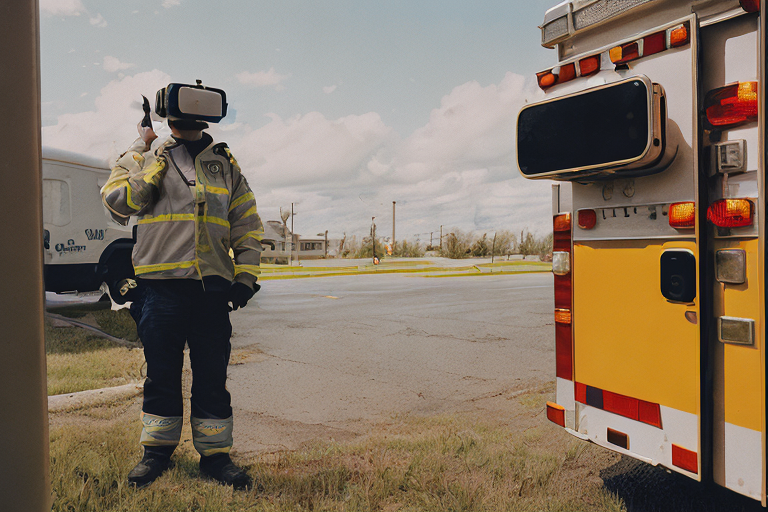공공안전산업에서 가상현실(VR) : 비상 대응 및 재해 관리 개선(Virtual Reality in the Public Saf…
본문

가상 현실(VR) 기술은 공공 안전 산업, 특히 비상 대응 및 재난 관리 분야에서 중요한 역할을 하기 시작했습니다. VR은 이러한 영역에서 준비성 향상, 응답 시간 개선, 안전 결과 개선을 포함한 몇 가지 이점을 제공합니다.
한국에서 공공 안전에 VR이 사용되고 있는 한 가지 예는 비상 대응자 훈련입니다. VR 시뮬레이션을 통해 응급 대응자는 안전하고 통제된 환경에서 지진, 화재 및 기타 자연 재해와 같은 다양한 시나리오에 대응하는 연습을 할 수 있습니다. 이를 통해 그들은 귀중한 경험을 얻고 실제 상황에 더 잘 대비할 수 있습니다.
또한, VR은 비상 대응 노력의 전반적인 효율성과 효과를 향상시키는 데에도 사용될 수 있습니다. 예를 들어, VR은 응급 상황에 대한 가상 보기를 최초 대응자에게 제공하여 현장에 도착하기 전에 상황을 평가하고 대응을 계획할 수 있도록 합니다. 이를 통해 지원이 필요한 사람들의 응답 시간을 단축하고 결과를 개선할 수 있습니다.

재난 관리에서 VR은 의사 결정권자에게 현장 상황에 대한 실시간 및 몰입형 뷰를 제공할 수 있습니다. 이를 통해 자원 할당 및 대피 절차에 대한 정보에 입각한 의사 결정을 내릴 수 있으며, 궁극적으로 영향을 받는 사람들에게 보다 효과적인 대응과 개선된 결과를 제공할 수 있습니다.
공공 안전에서 VR을 사용하는 것은 또한 생명을 구하고 비용을 줄일 수 있는 잠재력을 가지고 있습니다. VR 기술은 비상 대응자와 재난 관리 전문가에게 그들이 더 잘 준비하는 데 필요한 도구와 훈련을 제공함으로써 사상자 수를 줄이고 비상 및 재난으로 인한 피해를 최소화하는 데 도움이 될 수 있습니다.
결론적으로, 공공 안전 산업에서 가상 현실의 사용은 비상 대응 및 재난 관리 노력을 크게 개선할 수 있는 잠재력을 가진 유망한 발전입니다. VR 기술이 계속 발전하고 널리 보급됨에 따라, 우리는 미래에 이 분야에서 훨씬 더 혁신적인 응용 프로그램을 볼 수 있을 것입니다.

VR 기술이 계속 발전함에 따라, 공공 안전 산업에서의 사용은 증가할 것입니다. 그러나 모든 신기술과 마찬가지로 고려해야 할 과제와 잠재적인 단점이 있습니다. 한 가지 우려되는 것은 VR 장비 및 교육 비용입니다. 이는 일부 공공 안전 기관, 특히 예산이 제한된 기관에서 금지될 수 있습니다.
또 다른 잠재적인 문제는 VR 시뮬레이션이 비상 시나리오에 대한 비현실적인 뷰를 제공하여 비상 대응자들 사이에서 안일함 또는 과신으로 이어질 수 있는 가능성입니다. 이러한 우려를 해결하기 위해서는 VR 시뮬레이션이 가능한 현실적인지 확인하고 비상 대응자가 기술을 유지하기 위해 지속적인 교육과 강화를 받도록 하는 것이 중요합니다.

이러한 과제에도 불구하고 공공 안전 산업에서 VR의 이점은 분명합니다. VR 기술은 비상 대응자와 재난 관리 전문가에게 더 잘 대비하는 데 필요한 도구와 훈련을 제공함으로써 생명을 구하고 비상 및 재난으로 인한 피해를 줄일 수 있는 잠재력을 가지고 있습니다.
결론적으로, 공공 안전 산업에서 가상 현실의 사용은 비상 대응 및 재난 관리 노력을 개선할 수 있는 유망한 새로운 방법을 제공합니다. 해결해야 할 과제가 있지만, 잠재적인 이점은 상당하며, 향후 몇 년 동안 이 분야에서 지속적인 성장을 볼 수 있을 것으로 보입니다.
Virtual reality (VR) technology is starting to play a significant role in the public safety industry, particularly in the areas of emergency response and disaster management. VR offers several benefits in these areas, including increased preparedness, better response times, and improved safety outcomes.
One example of VR being used in public safety in Korea is in the training of emergency responders. VR simulations allow emergency responders to practice responding to various scenarios, such as earthquakes, fires, and other natural disasters, in a safe and controlled environment. This allows them to gain valuable experience and become better prepared for real-life emergencies.
In addition, VR can also be used to improve the overall efficiency and effectiveness of emergency response efforts. For instance, VR can provide first responders with a virtual view of the emergency scene, allowing them to assess the situation and plan their response before arriving on the scene. This can lead to faster response times and better outcomes for those in need of assistance.
In disaster management, VR can provide decision-makers with a real-time and immersive view of the situation on the ground. This allows them to make informed decisions about resource allocation and evacuation procedures, ultimately leading to a more effective response and improved outcomes for those affected.
The use of VR in public safety also has the potential to save lives and reduce costs. By providing emergency responders and disaster management professionals with the tools and training they need to be better prepared, VR technology can help to reduce the number of casualties and minimize the damage caused by emergencies and disasters.
In conclusion, the use of virtual reality in the public safety industry is a promising development with the potential to significantly improve emergency response and disaster management efforts. As VR technology continues to evolve and become more widespread, it is likely that we will see even more innovative applications in this area in the future.
As VR technology continues to advance, it is likely that its use in the public safety industry will only increase. However, as with any new technology, there are challenges and potential drawbacks to consider. One concern is the cost of VR equipment and training, which may be prohibitive for some public safety agencies, particularly those with limited budgets.
Another potential issue is the potential for VR simulations to provide an unrealistic view of emergency scenarios, leading to complacency or overconfidence among emergency responders. To address this concern, it is important to ensure that VR simulations are as realistic as possible and that emergency responders receive ongoing training and reinforcement to maintain their skills.
Despite these challenges, the benefits of VR in the public safety industry are clear. By providing emergency responders and disaster management professionals with the tools and training they need to be better prepared, VR technology has the potential to save lives and reduce the damage caused by emergencies and disasters.
In conclusion, the use of virtual reality in the public safety industry offers a promising new way to improve emergency response and disaster management efforts. While there are challenges to be addressed, the potential benefits are significant, and it is likely that we will see continued growth in this area in the coming years.






















댓글목록 0